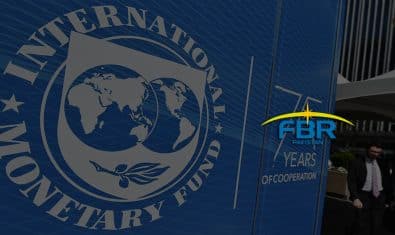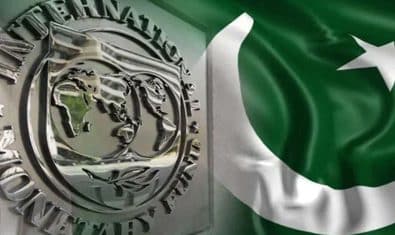A recent report by the think-tank Tabadlab has revealed concerning statistics regarding Pakistan’s debt situation and economic performance.
The report titled ‘A Raging Fire: Pakistan’s Debt Crisis’ highlights a significant increase in Pakistan’s debt per capita alongside a decline in GDP per capita over the past decade.
According to its findings, Pakistan’s debt per capita surged from $823 in 2011 to $1,122 in 2023, marking a substantial 36 percent rise. In contrast, GDP per capita witnessed a decrease from $1,295 in 2011 to $1,223 in 2023, reflecting a 6 percent decline. This worrying trend suggests that Pakistan’s debt is growing at a faster rate than its income, leading to widening financing gaps and the necessity for further borrowing.
The report underscores the adverse impact of escalating debt repayments on crucial sectors such as social protection, education, health, and climate change initiatives. With debt repayments reaching historic highs, the needs of Pakistan’s expanding population are being deprioritized, posing significant challenges to the country’s sustainable development.
The report highlights the exponential growth in debt burden for future generations, exemplified by a 4.5x increase in debt per child born between 2011 and 2023. It also notes a substantial rise in both external and domestic debt since 2011, emphasizing the unsustainable nature of Pakistan’s borrowing and spending habits.
In the fiscal year 2024, Pakistan faces the daunting task of repaying an estimated $49.5 billion in debt maturities, a considerable portion of which comprises interest payments. This mounting debt burden, coupled with a lack of investment in productive sectors, paints a grim picture of Pakistan’s economic trajectory.
The report further underscores Pakistan’s vulnerability to external shocks and macroeconomic volatility, exacerbated by heavy reliance on external financing and a consumption-driven economy. The country’s climate and debt vulnerabilities are intertwined, presenting a dual existential crisis that demands urgent attention and strategic mitigation efforts.
Pakistan’s recurring boom and bust cycles, characterized by shortening periods of sustained growth, pose additional challenges to long-term economic stability. Persistent current account and fiscal deficits reflect Pakistan’s inability to reconcile expenses with revenues, further aggravating its debt predicament.
The report emphasizes the urgent need for Pakistan to address its debt crisis and unsustainable economic practices. It calls for strategic reforms aimed at bolstering revenue generation, curbing expenditure, and fostering investment in productive sectors to ensure sustainable growth and resilience against future challenges. Failure to address these issues risks further deterioration of Pakistan’s economic outlook and reputational damage in the global financial markets.
Report Suggestions
-
De-Risk the Business Environment
Before expecting investments in the country or export growth, it is critical to de-risk the environment.
How: Local and foreign investors require a stable legal framework and consistent sovereign commitments to consider long-term and high-risk investments. Honoring commitments, timely resolution of legal disputes, and swift bankruptcy proceedings are essential to reducing risk.
Reforms: The sovereign’s risk is linked to its inability to control spending and boost revenues, leading to heavy reliance on debt, thus increasing overall risk. Showing the capability to implement fiscal reforms is crucial for reducing risk.
Policy continuity: Investment tends to favour higher return environments adjusted for risk. Volatility in policy decisions due to changes in the political environment increases risk.
-
Fix the Twin Deficit Problem
The twin deficits, unless managed, will continue to demand borrowing, which will increase servicing, continuing the endless downward spiral.
Fiscal Discipline and Expenditure Management: Implementing fiscal discipline and effective expenditure management can help in reducing the fiscal deficit. This involves controlling government spending, prioritizing public investments, and ensuring efficient use of resources.
Export Promotion and Diversification: By promoting exports and diversifying the export base, Pakistan can work towards improving its current account balance. This can be achieved by identifying new export markets, supporting export-oriented industries, and enhancing trade competitiveness.
-
Increase Foreign Currency Inflows
How: Create special funds and partnerships to bring in capital for important projects. These projects must prioritize export-oriented agricultural and industrial development.
Encourage Global Investments: Make it easier for global pension funds and government funds to invest directly into these projects instead of buying government bonds.
Tax Benefits: Offer investors tax benefits in key sectors that need growth. This solution is only viable if there is policy continuity and regulatory stability.
-
Make Internal Recalibrations
For Pakistan’s economy to grow, critical internal recalibrations need to be made in how we handle state-owned enterprises (SOEs), and public-private partnerships (PPPs).
Managing SOEs: Privatize, sell, or at least break SOEs into smaller, competitive entities, capping subsidies and cross-subsidies.
Prioritize PPPs: Prioritize and expand a public-private partnership ecosystem, with stringent governance to mitigate inevitable elite rent-seeking. Public Sector Development Programme projects can be structured as PPPs, crowding in local capital and foreign investors, establishing that they will become rarer.
Capital Reallocation: Encourage this by implementing policy changes, such as amendments to tax and commercial codes, improved compliance, and the reduction of subsidies, to redirect investment and capital allocation away from non-productive and non-export-oriented industries.
-
Expand Direct Tax Net
Political Will: No solution for improving the tax net is viable without political will and elite drawdown from rent-seeking.
Expand Tax Net: Include retail and wholesale trade in the tax net; incentivise provinces to increase property taxes. Digitise the economy and increase banked population to increase the tax net.
Redirecting Marginal Investor: Expanding the tax net means bringing more people and sectors into the tax system to increase government revenue, but also to redirect marginal investors to more productive sectors.
Redesign NFC: The NFC award must be redesigned to have provinces be responsible for expenditures, particularly for devolved subjects.
-
Look Outwards
Pakistan needs to improve its fiscal regime to open space for private credit, particularly for local firms and industries. All of this needs to be viewed through an export-focused lens.
How: Establish an export-oriented industrial policy and reduce trade barriers, incentivising redirection of credit and capital towards local firms, allowing them to be more productive, therefore allowing greater exports and increased FDI.
Export-Orientation:
-
- First, it needs to come through a consistent dollar devaluation policy (or at least an end to attempts to shore it up).
- Second, it needs a drawdown of incentives for local investments, to give the marginal investor reason to go towards exports.
- Third, it needs to draw down industry-specific subsidies that have resulted in elite capture, even among exporters.
-
Rethink Climate Financing
Pakistan can use the debt it already owes towards fighting climate change, in addition to forging a strong internal carbon credit regime.
How: Leverage debt-for-nature swaps to meet Pakistan’s extensive climate change needs in adaptation, resilience, and green transition.
Climate-Linked Debt: Identify Pakistan’s climate needs, negotiate with creditors, devise climate performance metrics, link repayments to identified metrics, ensure third-party oversight, and extensive monitoring, evaluation, and learning.
Carbon Credits: Create a robust carbon trading ecosystem to both make it costly for companies to pollute, and fund projects that accelerate climate transition.






















good article!!
Its funny to think Pakistan has the capacity to take these actions. Our leaders, establishment and judiciary has proven to be self centered and short term thinkers.
Our system is corrupt to its core, due to which, Pakistan’s own people are not investing in Pakistan, how can we expect others to invest, except when they exorbitant profits like our IPP agreements. Since 30 years we have been paying the price and circular debt has hundreds or thousands of billions un-paid bills.
FYI, if things go the same way, Pakistan’s people can study the situation of Lebanon for the past years to know what’s coming for them.
Payment of debt is crisis. IMF is not the solution. Remedy is increasing revenues and reducing expenditures. It is my belief that creditor can give us some relief provided they are shown light at the end of tunnel.
Need of the hour is to make short/ medium/ long term plans for payment of debts. Military might has the power to do anything in the country but don’t have the skill to govern the country. This is also true some politicians also facilitated the army to intervene to turn the victory of their rivals into defeat.
All politicians must sit together and arrange economists conference and look for solution of this crisis. Otherwise public should refuse to accept them.